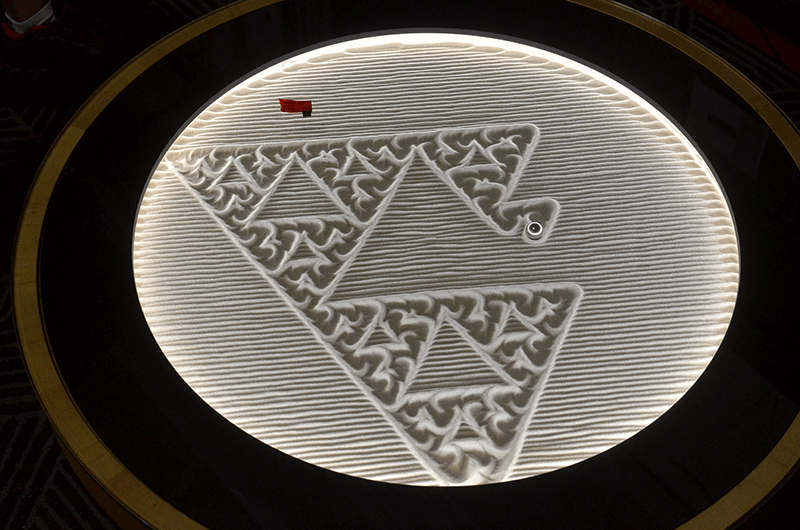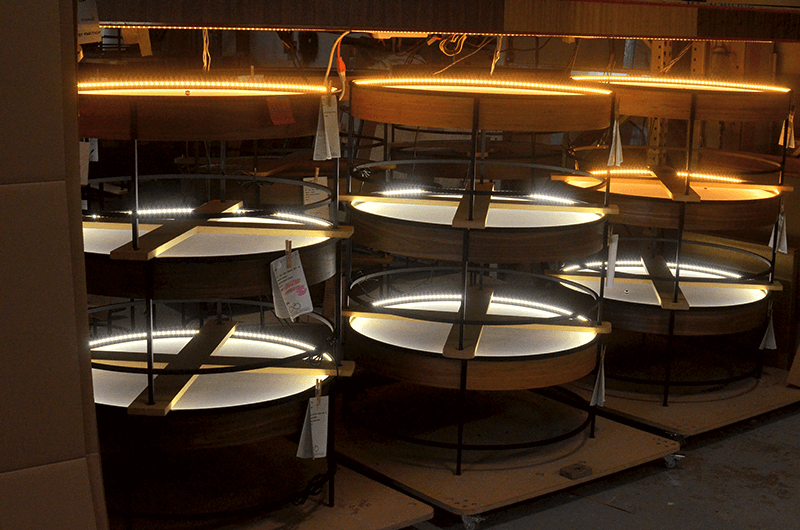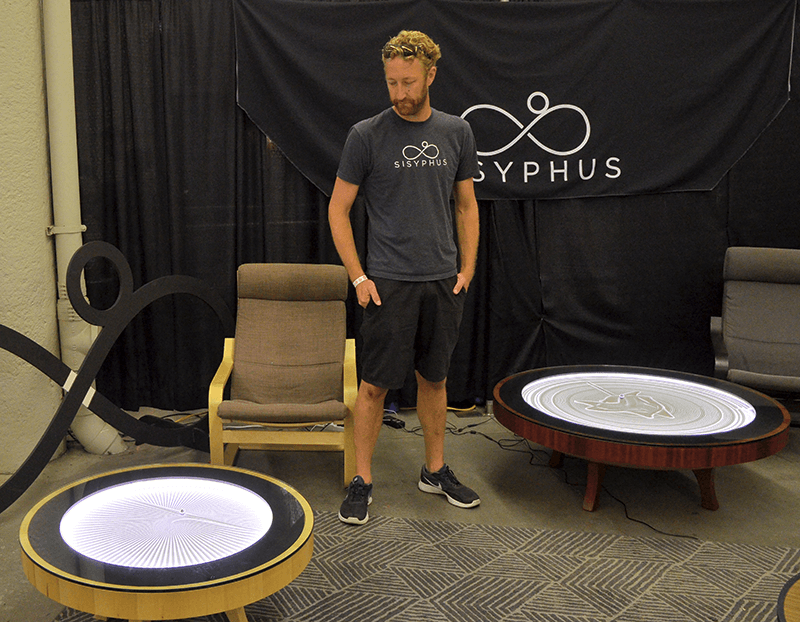To call Bruce Shapiro a furniture maker would be true; he does make furniture. But the term is inadequate to describe the materials he uses. Wood, steel, glass, for sure; but also sand, ball bearings, motherboards and motion-control technology. Shapiro’s company, Sisyphus Industries, produces a glass-covered table that seems to come alive with the touch of a finger – from across the room. Shapiro calls it Sisyphus – the kinetic art table.
The art that the table produces is created by an advanced type of computer numerical control (CNC), the automation of machine tools by means of computers executing pre-programmed sequences of machine control. Shapiro says he has spent the past 25 years “dedicated to exploring motion control as an emerging medium for artistic expression, building CNC art and kinetic sculpture that combine my love of art, science and education.”
Shapiro completed medical school at the University of Minnesota, where he met his wife, Beverly. He practiced medicine in California and Minnesota for several years, but left the field to return to what he describes as his childhood enchantment with music, electronics, and “making things.” By 1990, he had devoted himself to making motion-control tools for art and education. His work is permanently installed in the U.S., Canada, Europe and Australia.
In 2016, Shapiro launched a Kickstarter campaign to finance the production set-up for his Sisyphus tables. He made his initial goal of $50,000 in 24 hours, and went on to raise more than $1.9 million. The company’s first responsibility after going into production was to send the promised rewards to its backers.
Since last September, Sisyphus has shipped more than 1,300 tables, and is now taking orders for its steel and wood models. The company, located on Taft Street NE, hopes to scale up its output to around 200 tables per month. Shapiro is Sisyphus’ founder and owner, Beverly is the chief financial officer, and Micah Roth is the chief operating officer.
To describe a Sisyphus table is a challenge. Picture a desktop Zen garden, with its white sand and tiny Japanese rake, a tool for relaxation and meditation. Now scale it up to a three- or four-foot circle, covered in glass, and replace the rake with one or two small steel balls. Now imagine the balls moving in precise geometrical lines, tracing impossibly complex patterns in that sand. LED lighting and high-end woodwork wrap the circle into a unique object that straddles the gap between furniture and sculpture.
Those patterns and that motion are made possible by what Shapiro calls a “sisbot,” a two-motor robot assembly that controls a magnet that pulls the metal ball along a programmed path of polar coordinates. About the diameter of a phonograph turntable, it has a moveable arm with the magnet at its end. The assembly has 25 design programs, and allows Bluetooth downloading of additional patterns. Depending on size, the tables take from 100 to 200 watts of 110V household voltage to operate. An app turns a smartphone into a remote control for selecting tracks, changing the speed of movement, or dimming the light.
Asked who might be the target audience for one of his works, Shapiro replied, “Anyone who wants a table.”
While you could put a lamp, a vase of flowers, or a bowl of pretzels on a Sisyphus, you’re not likely to. You’ll be too engaged in the continuous beauty of the flowing sand. And like the mythical Sisyphus, whose punishment for cheating death was to roll a great rock up a mountain for eternity, the ball rolls through its bed of sand again and again.
Below: An example of the Sisyphus table, a table during testing, staff member Micah Roth with display at Maker Faire, and founder Bruce Shapiro (center). See a video at sisyphus-industries.com. (Photos by Mark Peterson)



